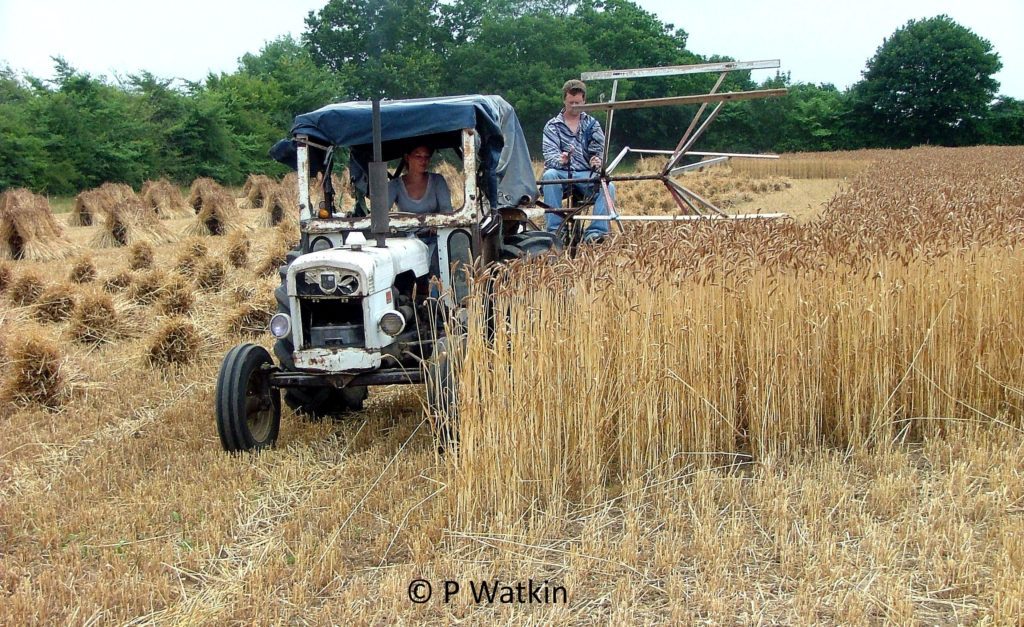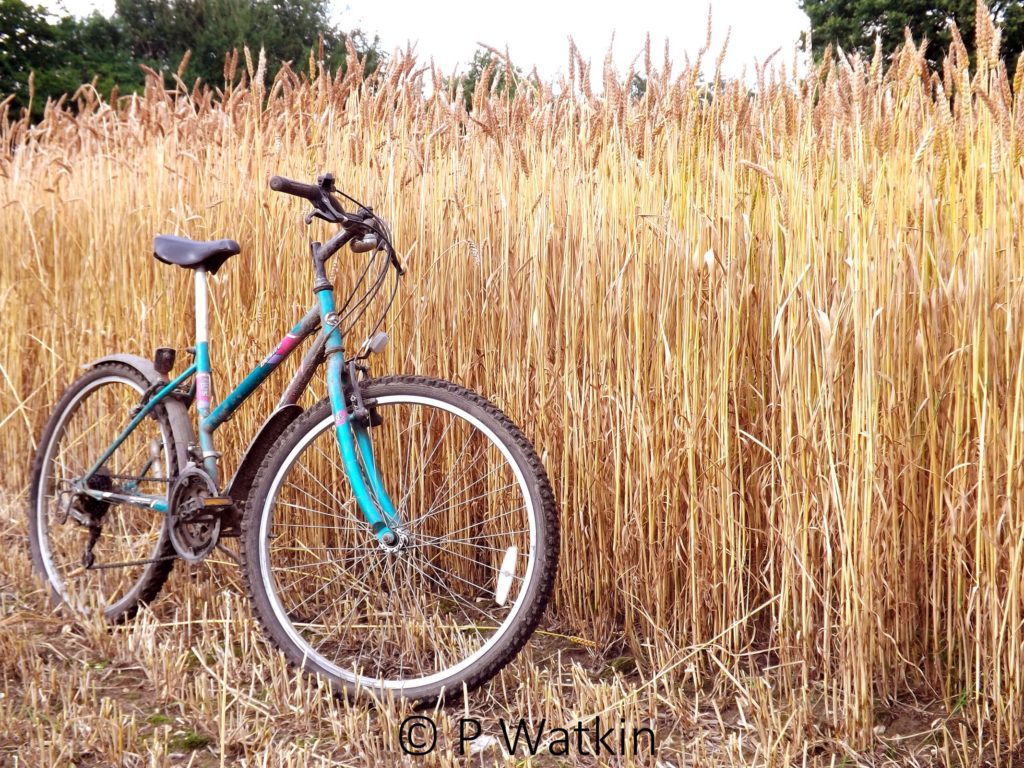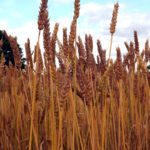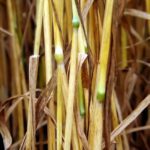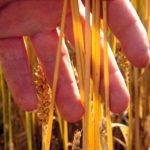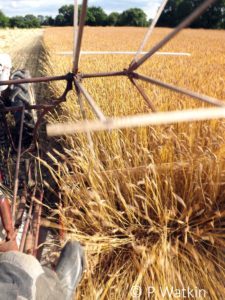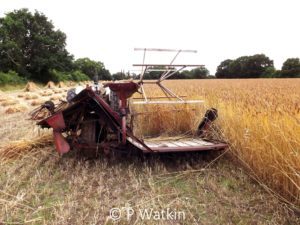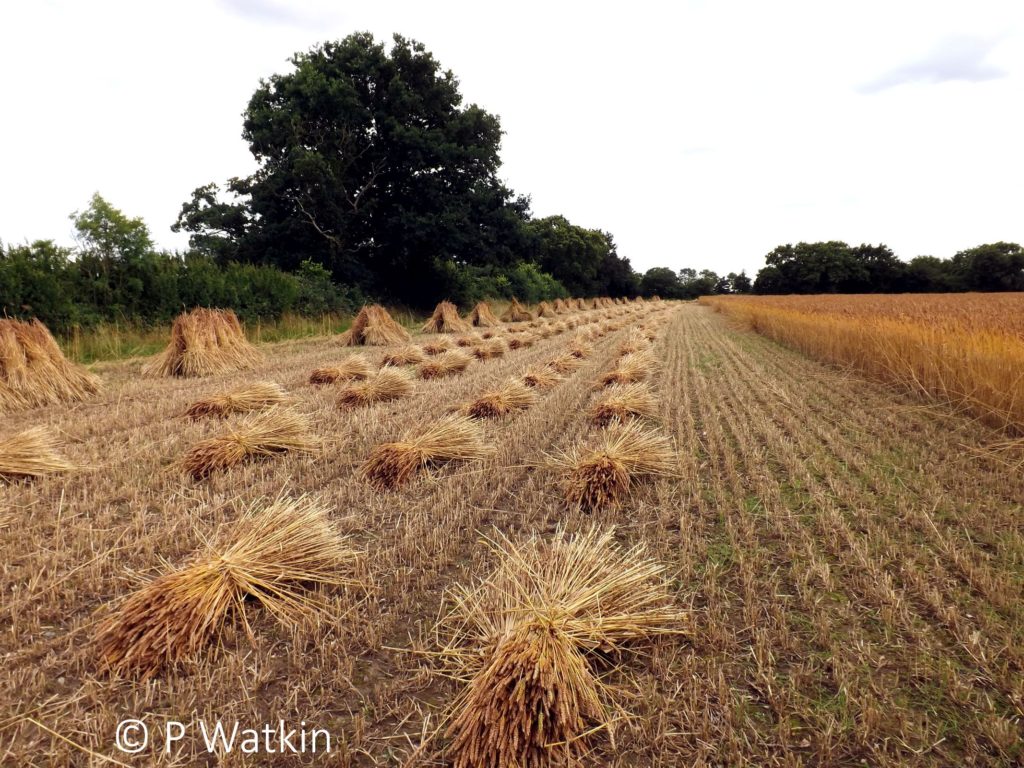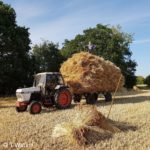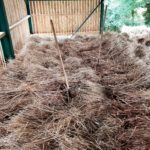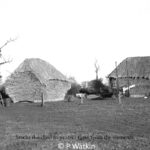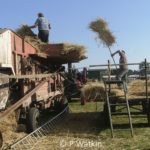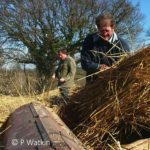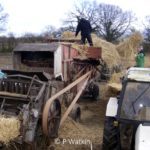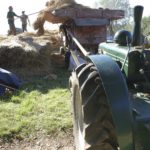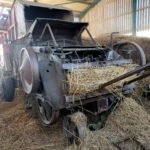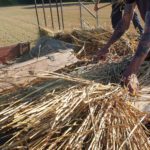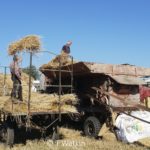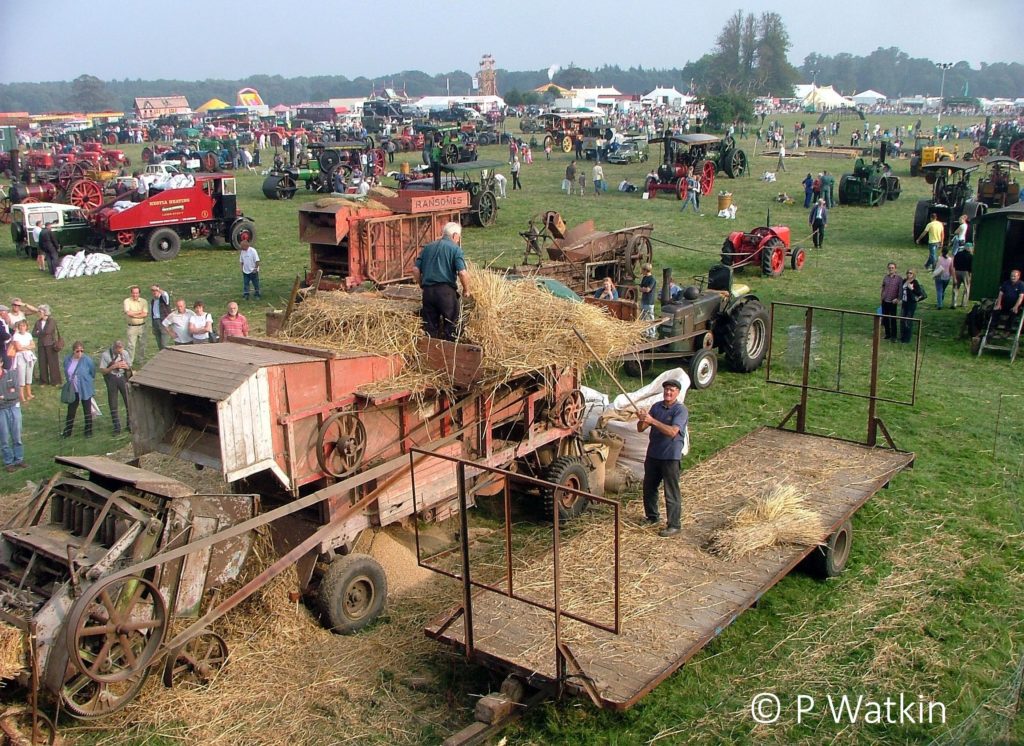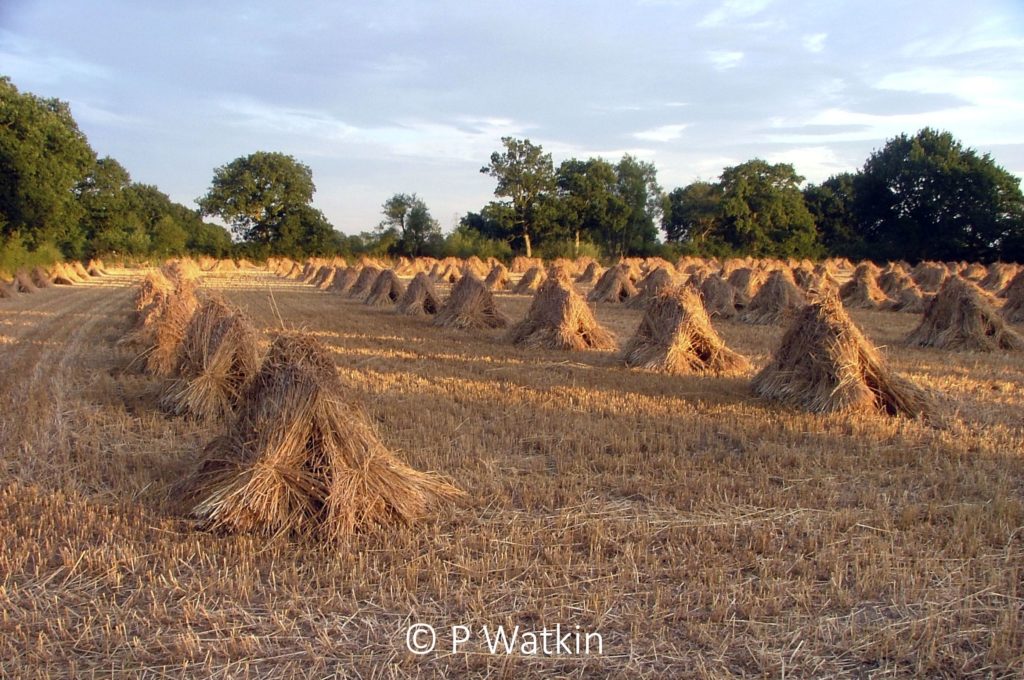Introduction
Recent thatching straw shortages have led to our receiving questions about producing straw for thatching. Questions such as:
- “What is involved?”
- “How is it grown and harvested?”
- “What has to be done to prepare the straw for thatching?”
Although we have grown thatching straw ourselves and have answers to these questions we knew that getting the information from a specialist, ‘a farmer’s view’ would be even better.
So we asked our good friend, Paul Watkin (Chairman of the National Thatching Straw Growers Association), if he could help us with this article. Here’s some of what he said, along with some of his amazing pictures of the process.
Growing Thatching Straw
Sowing
Growing wheat for producing straw for thatching is pretty much as one would for any wheat crop, at least in the beginning. In the autumn plough or cultivate the land and prepare a seed bed, although sometimes when conditions are difficult direct drilling can be done, drill the seed at about 12 stone to the acre, ( roughly 190 kilos a hectare), a little more if drilling later say in November. So far no different to drilling a modern variety.
Wheat, like most crops, does not like wet feet, so well drained land is preferred. Thatching wheat varieties are predominantly old tall types, Yeoman, Squareheads Master or a bit more up to date a 1960’s variety Maris Widgeon. Almost any wheat that grows to a decent height will do.
Care
Most farmers, nowadays, apply a pre-emergence spray (to control grass weeds and some broad leaved weeds). Personally I don’t, I prefer to see if there are weeds in the Spring which need controlling. Length of straw is what we are aiming for, so no growth regulator is used. I have heard of some people applying a quarter rate growth regulator to stiffen rather than shorten the straw, but we don’t on this farm. The application of Nitrogen fertiliser is restricted. We apply no more than forty units an acre, (I think that is fifty kilos a hectare) in the spring, Potash and Phosphate as normal.
We tend to rib roll the crop in the spring when it’s dry enough to travel, sometimes harrow and roll. Some farmers roll in the Autumn after drilling but that is mainly so pre-emergence weed killers can work more efficiently. This can lead to “capping” of the soil leading to standing water over winter on our land.
Harvesting Thatching Straw
When to Harvest
Here in Suffolk the start of harvest can vary from 17th July to the beginning of August, depending on the season. Whenever it is, the crop is best cut when the grain is cheesy ripe with the ears erect, the knots/nodes green and the straw having a sort of translucent look about it, perhaps some 10 to 14 days before one would be using the combine harvester. Weather is, as always in farming, a boon or a bind. Cutting with a binder is not dependant on bright sunshine, although everything seems to run better when it is.
What machinery is used to Harvest
We use a McCormick Deering binder, a modern one from around 1950, PTO driven from the tractor. Also we have an older wheel drive “horse” binder of the same make which is powered from the big wheel turning the mechanism. The binder cuts the wheat, conveys the cut corn via canvas conveyers to the packers and the knotter. When a sheaf is the right size a trip mechanism operates the needle and the knotter followed by forks that rotate to expel the sheaf to the ground.
How it is Harvested
We cut around the field in ever diminishing circles to the middle, pulling out of the crop on each corner to facilitate the turn as PTO shafts can be damaged if turning too tight. The uncut crop takes on a point at each corner where the binder exits the cut and the tractor turns in a wider arc so the divider enters the crop on a curve into the next side of the field.
After cutting the sheaves are picked up by hand one under each arm and slapping the tops together dropped in an upright position with the knot side innermost to lean against each other. We tend to put five pairs of sheaves on a stook or shock as we say in East Anglia. The wheat is left “on the shock” for a good week to dry, sometimes much longer if we have rain or foggy nights. These sheaves will stand a rain well protected by the tent shaped Stook or Shock, they must be dry though before carting.
Collecting and Storing Thatching Straw
On this farm we use the traditional method of carting and stacking using forks. This is labour intensive. Some growers have tried methods of carting using contraptions to clamp 30 or 40 sheaves into a giant bale which can be moved using a telehandler. I think that by the time the clamp is packed those sheaves could be loaded on to a trailer and carted.
We used to stack outside which was the traditional way, the stacks roofed up and thatched to protect them from the elements until threshing time. Then we went on to use tarpaulins which was quicker, but now we have a large shed in to which the sheaves are stacked ready for threshing.
Stacking involves making a good dry stack bottom using old straw, bushes even pallets. It is a matter of coursing round the stack working to the middle overlapping as you go, it is important to keep the sides of the stack upright and not let the sheaves slip out. When the middle is reached repeat the courses until the stack is as high as maybe 15 feet to the eave. The stack can then stand until threshing which might be months away. Vermin are hard to keep at bay so earlier threshing is recommended.
Preparing Straw for Thatching
Threshing / Thrashing
We use a Ransomes Thrashing Drum from 1951, Ransomes spelled “thrashing” that way, and a Claas low density baler or buncher to tie up the threshed straw. Thrashing/threshing removes the grain from the straw. There are different makes of threshing machine, all very similar and many ways of dealing with the straw. A straw trusser for example which has a similar mechanism to a binder to tie up the straw. We produce longstraw where the threshed straw is tied up and transported to the thatcher.
Combed Wheat
I have only seen a wheat reed comber once in my life near Exeter so my knowledge of them is sparse. Here is some information from another source.
Where Combed Wheat Straw is produced, a Comber is attached to the threshing drum at the top to “comb the straw” eg remove the flag (ie leaves). Straw is fed into the comber on a belt system, the grain is stripped out and goes through into the drum and is separated from the chaff (as for longstraw). Once combed and threshed, the straw is fed out on a belt into a single or double string trusser. Bundles are then “butted down” and maybe cleaned a bit more by hand.
Longstraw
Most of our customers are Suffolk thatchers who use longstraw which is the traditional method hereabouts. I used to thatch the stacks so I know a bit about thatching. How the straw is shaken on to a bed and water thrown across it, more straw is added and wetted until a bed of straw is about four feet thick maybe eight feet wide and eight feet from front to back. The bed is shaken up from the back in layers and left for a few hours to settle. The front of the bed is where the straw is pulled from. The thatcher works his way along the front pulling the straw out with both hands and laying it in a row, then the straw is yealmed, or gabbled, to straighten the straw. These yealms are put into a bundle and carried up on to the roof to lay.
And Finally
We are very pleased to have been able to bring you this fabulous information on producing straw for thatching: – from preparing the land and growing the corn right up to the point where it is ready to go on the roof.
For those of you who know this process we hope we have shown the knowledge and skill that you possess and the important part you play in maintaining our thatched buildings.
Those of you who knew less about it or even nothing at all, thank you for reading so that you have a better understanding. We are pleased to have been given the opportunity to explain a bit more about this important part of the process of thatching or rethatching a roof.
Producing good thatching straw is an important part of creating a well thatched roof which will not only look fabulous but also last as well as it should. In the past all thatchers understood and many were involved in this process but now it is sadly not always the case. Perhaps it is something we should all think about.
Many thanks to Paul for his wonderful and wise words on this topic as well as the great pictures.


